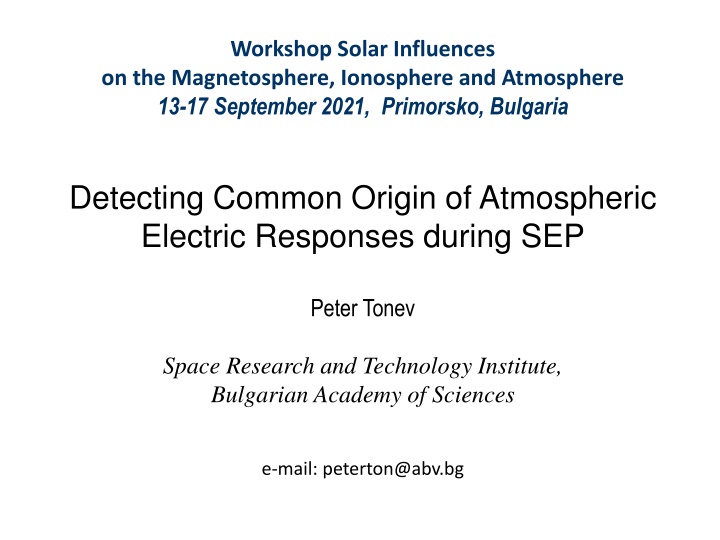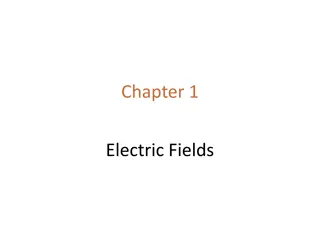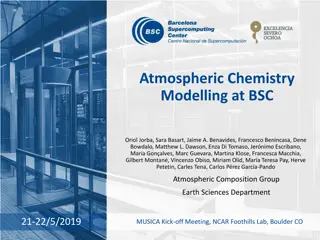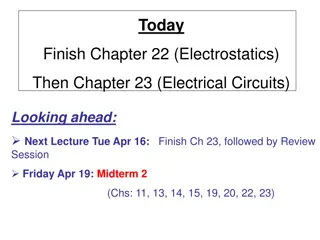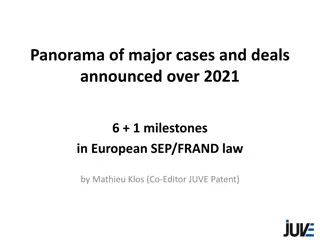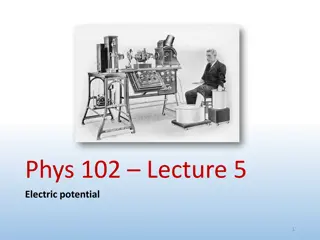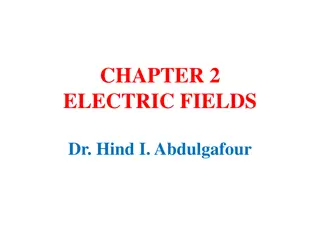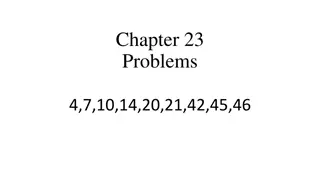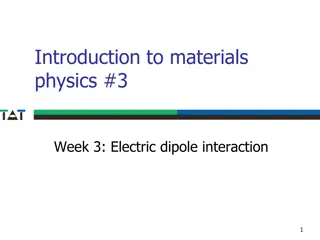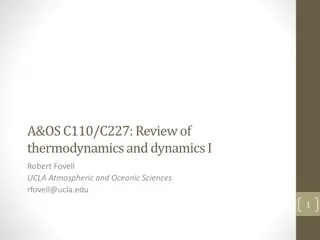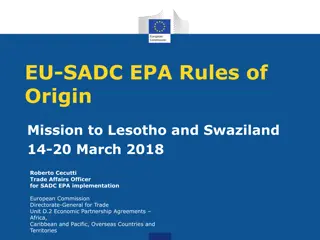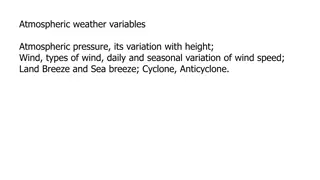Detecting Common Origin of Atmospheric Electric Responses during SEP
Workshop on detecting common origin of atmospheric electric responses during SEP. Peter Tonev from Space Research and Technology Institute, Bulgarian Academy of Sciences, will be presenting at the event in Primorsko, Bulgaria."
Download Presentation

Please find below an Image/Link to download the presentation.
The content on the website is provided AS IS for your information and personal use only. It may not be sold, licensed, or shared on other websites without obtaining consent from the author.If you encounter any issues during the download, it is possible that the publisher has removed the file from their server.
You are allowed to download the files provided on this website for personal or commercial use, subject to the condition that they are used lawfully. All files are the property of their respective owners.
The content on the website is provided AS IS for your information and personal use only. It may not be sold, licensed, or shared on other websites without obtaining consent from the author.
E N D
Presentation Transcript
Workshop Solar Influences on the Magnetosphere, Ionosphere and Atmosphere 13-17 September 2021, Primorsko, Bulgaria Detecting Common Origin of Atmospheric Electric Responses during SEP Peter Tonev Space Research and Technology Institute, Bulgarian Academy of Sciences e-mail: peterton@abv.bg
Evidence for strong and peculiar response of atmospheric electricity to SPE Many experimental measurements for several decades demonstrate too strong & unusual response of the atmospheric electrodynamics during major solar proton events (SPE). - At different latitudes: high, middle, and low - In different atmospheric regions: in mesosphere (rocket-borne data); stratosphere (balloon- borne or rocket-borne data); and at ground level Basic characteristics of interest: i) Conductivity ; ii) Vertical electric field Ez & current Jz Peculiar features (unexplained for the majority of experiments): - Extremely large and unusual non-transient, as well as transient, variations of Ez & Jz; - Reversals of electric field Ez and related current Jz for hours (i.e. non-transient). Global atmospheric electric circuit (GEC) - simple representation Electric conductivity, S/m El. current Jfw ~ 2-3 pA/m2 from ionosphere down to the surface in fair-weather regions. Hypothesis: The variations observed in each experimental case represent the response of GEC to the processes in mesosphere at high & auroral latitudes driven by SPE.
Essential of the experimental results: I. High and auroral latitudes -1- I.1. In mesosphere and upper stratosphere: during major SPE 19-22 October 1989 Rocket-borne data was obtained on 21.10.1989 at 19.31 UT, at latitude 58.5 S (Zadorozhny et al., 1998). SPE (one of those with biggest fluence for E<10 MeV) is accompanied by major geomagnetic storm on 20-21.10 (on 21.10 index Kp reached 8+; Kp=8 during rocket launch). Vertical electric field Ez reaches extremely high values in mesosphere (unexplained) Ez = +12.2 V/m at altitude z=58 km, and -9.7 V/m at z= 46 km For comparison, for usual conductivities 2-6 x10-11 S/m and fair-weather current 2 pA/m2Ez should be about -100 mV/m i.e. smaller at least by two orders of magnitude; and well below that, as result of enhanced conductivity due to strong impact ionization during SPE. 12.10.1989 70 21.10.1989 Fig.1. Profile of vertical electric field Ez from rocket-borne data at latitude 58.5 (South Indian Ocean) on 21.10.1989, 19:31 UT during major SPE of GLE event type, and major geomagnetic storm (Kp=8): thick line. Peak values of Ez are the largest ever measured in mesosphere; much bigger than those in case of second largest peaks measured on 12.10.1989 (thin line). Series of measurements in different locations in mesosphere for decades show, for most of the cases, unusually large (and still unexplained) vertical electric fields of the order of magnitude of 1 V/m, but never that large. 60 Altitude, z, km 2 12.2 V m 50 1 2 40 -9.7 V m 30 20 -10 -5 0 5 10 15 Vertical electric fields Ez, V/m
Essential of the experimental results: I.2 High and auroral latitudes, stratosphere -2- Balloon-born measurements took place in Antarctic middle stratosphere at 31-33 km during SPE on 20 January 2005 (with very hard spectrum: GLE 69) (Kokorowski et al., 2006). Balloon coordinates: from (70.9 S, 10.9 W) to (71.4 S, 21.5 W). Geomagnetic conditions: a) From SPE onset at 06:51 UT until 14:00 UT quiet; b) Increased geomagnetic activity from 14:00 UT until the end of day; c) Strong geomagnetic substorm after 15:54 UT. Main features of vertical electric field Ez and current Jz i) Non-transient large variations; ii) Jz reaches more than twice larger values than usual; iii) Ez changes its direction for many hours; iv) Ez has two jumps coinciding with SW changes. Fig.2. Time variations of: a) conductivity ; b) vertical electric field Ez. Unexplained features: i)Typical moderate variations of related current density Jz~2 pA/m2 are strongly impaired here. ii) Too large integrated el. current across the balloon altitude for each of two time periods ~08:30-14:00 UT and from 16:00 UT on. The origin of the large amount of the transited electric charge is unknown.
Essential of the experimental results: I.3 High and auroral latitudes, at surface -3- Ez at ground level:during three SPE of GLE type in 2001, on 14.04, 18.04, 04.11 Measurements of Ez in: i) Apatity, Russia (67.3 N, 33.2 E), geomag. latitude +63.8 ; and ii) Vostok station, Antarctica (geomag.lat. -89.3 ) on 14.04, Shumilov et al., (2015). Variations of Ez observed are between about -1 and +1 kV/m (typically, Ez~100 V/m) Unexplained Peculiarities: i) Unusually large variations; ii) non-transient reversals of Ez. 14 April 2001, Apatity 14 April 2001, Vostok station 18 April 2001, Apatity 4 November 2001, Apatity Fig.3. Time variations of vertical electric field Ez (>0 for downward; <0 for upward direction) at Apatity and Vostok during three SPEs. Vertical lines indicate respective solar flares. We have examined several hypothetic mechanisms to explain these data - no success! The new idea is that the observed variations of Ez & Jz are mutually consistent via GEC
Essential of the experimental results. II.1. Low latitudes, ground-level Measurements of atmospheric electric field Ez at surface in CASLEO, Argentine (31.8 S, 69.3 W), at 2552 m altitude, for 15 major SPEs, Tacza (2018). Fig.4. Results for atmospheric electric fields (AEF) during 15 major SPEs. The average absolute deviation (in V/m) of AEF Ez from mean diurnal curve for Ez is shown. Unambiguously, SPEs lead to significant deviations of Ez from its mean value. The cutoff rigidity is 9.8 GV. Hence, the deviation hardly can be explained by a direct effect of energetic proton flux. II.2. Middle latitudes, ground level Similar results have been obtained at low (Cobb, 1967) and middle (Reiter, 1978) latitudes According to our point of view, the observed deviations in electric field Ez represent the response of GEC to SPE, or, more precisely, its response to effects of SPE in mesosphere at high and auroral latitudes
-1- Analysis of rocket-borne measurements in auroral mesosphere on 21 October 1989 Energetic proton flux spectrum for SPE 19-22.10.1989, Marvin & Gorney (1992) 19-20 Oct. 1989 21 Oct 1989 Fig.5 GOES-7 data on 19-21.10.1989. Proton channels: 1) 4.2-8.7; 2) 8.7- 14.5; 3) 15-44; 4) 39-82; 5) 84-200; 6) 110-500; 7) 640-850 MeV (Dashed curve is for electrons >2 MeV. Vertical line indicates launch time 19:31 UT. Proton fluence for energies 1-10 MeV is among the highest ever observed. 00:00 12:00 19:31 00:00 UT
Factors determining height distribution of relaxed protons in atmosphere Stopping altitudes of energetic protons (dashed line) and electrons (solid line) as function of their energy. Proton cutoff rigidity at 450 km by different values of Kp index, Rodgers et al.(2006) - Each energetic proton that penetrates into atmosphere enters also an extra elementary positive charge qe=1.6 10-19 into it. - This extra charge cannot enter back the magnetosphere due to low energy of its (any) carrier - Hence, uncompensated positive spatial charge QPT= qen is being accumulated below about 150 km during SPE where n is the number of penetrated protons. - Its neutralization can occur by precipitatied electrons of same quantity from magnetosphere.
-2- Analysis of rocket-borne measurements in auroral mesosphere on 21 October 1989 Integral Fluence for 19-31.10 (cm-2); & Equivalent positive charge QPT >1 MeV >5 MeV >10 MeV >30 MeV >60 MeV >100 MeV pfu 1.03 1011 3.89 1010 1.92 1010 4.26 109 1.23 109 4.65 108 QPT, C/m2 1.65 10-4 6.24 10-5 3.07 10-5 6.82 10-6 1.97 10-6 7.44 10-7 Even if very small part of this charge enters the atmosphere, it would be yet much larger than the charge in GEC from tropospheric sources evenly distributed at the globe: ~10-10 C/m2 Hence, the uncompensated charge injected into atmosphere should be taken into account! The problem of redistribution of elecric charges in the atmosphere thus arises. Oversimplified model: Uncompensated electric positive charges injected at the stopping altitude corresponding to protons initial energy, are transported then upwards towards increasing conductivity to the base of magnetosphere at ~150 km altitude. But the uniformly distributed charges at this altitude would have no effect on GEC below! Mesosphere & Stratosphere where the most solar energetic protons are injected at high latitudes (medium conductivity) Equivalent between ionosphere. RT, RS, RM are column resistances troposphere, stratosphere & mesosphere, RT>>RS>>RM. A newly injected elementary charge is carried upwards. electric surface link and + + + RM + for + Troposphere (low conductivity) Region of high conductivity RS + RT + ZMB - Lower boundary of magnetosphere. Extra positive charges imported by stopping protons are transported & evenly distributed at ZMB. They do not contribute to the electric field Ez below ZMB. + +
Analysis of rocket-borne measurements in auroral mesosphere on 21 October 1989-3- 70 12.10.1989 70 21.10.1989 60 60 Altitude z, km Altitude, z, km 2 50 50 1 2 40 40 30 b) a) 30 20 20 -20-15-10 -5 0 Electric charge density, C/m^-3 (xE-12) El. charge density, C/m3 10-15 5 10 15 20 25 30 35 -10 -5 0 5 10 15 Vertical electric fields Ez, V/m Fig.6. From the profile of vertical electric field Ez at the time of rocket launch time (a) we derive the profile of electric charge density (b) from Gauss s law divE= / 0, 0=8.85x10-12F/m is permittivity. - We analyze the main layer LP of positive charge around 50 km and the total positive charge QLP in it. This layer is hypothetically fed by the uncompensated positive charges injected during SPE. Any precipitation of protons from magnetosphere have no significant contribution to layer LP - Layer LP is in quasi-steady state at the flight time since the decay of proton flux is very slow (~7% per hour), and no other sources affect it. The conductivity in LP satisfies then: QLP / tP = JP where JP(z) = FP(z)qe is the source current of newly injected uncompensated positive charges; FP(z) is the proton flux reaching altitude z), and tP is the relaxation time, tP = 0 / . (1)
Analysis of rocket-borne measurements in auroral mesosphere on 21 October 1989-4- The source current JP is derived from the proton flux parameters (Fig.5) by assumption that at the top of atmosphere (~100 km) the same flux as that measured at Lagrange point (such approximation has been used also by other authors). With columnar charge density in LPQLP~10-10 Cm-2 and JP~10-14 Am-2 for the layer LP, a rough approximation of conductivity LP in the layer Lp around 50 km yields: LP = JP 0 / QLP ~ 10-15 S/m (2) This incredibly low conductivity is necessary to avoid fast relaxation of the charge QLP. Such paradoxically low conductivity, if only relevant, could be due to presence of aerosol particles. Similar conclusion is made by Zadorozhny (2001), Holzworth and Goldberg (2004). Similar large reduction of conductivity by several orders of magntude has been derived from measurements of Ez in NLC in mesopause by Holzworth and Goldberg (2004) (Fig.7). They obtained for conductivity there ~4x10-13 S/m, i.e. decreased by several orders of magnitude. Fig.7. Vertical electric field measured in a noctilucent cloud around ~81 km altitude (Holzworth and Goldberg, 2004). Conductivity is decreased by several orders of magnitude, which is due to aerosol particles, according to authors.
Creation, growth, and charging of aerosol particles Main phases of creation and growth of aerosol particles. We suppose that during major SPE aerosol particles (APs) are being created and grow to larger particles; they also can carry multiple electric charge (up to 10?). Physics of aerosol in stratosphere and mesosphere is not well developed yet. Presumed properties of layer of aerosol particles (APs) during strong SPE - Growth and multi-charging of APs during SPE; - Grown up APs are stable and their mobility is very low; - APs control mesospheric and stratospheric conductivities during SPE: these decrease strongly in time: hence, columnar resistance within an aerosol layer would increase; - A significant portion of the uncompensated positive charge is being accumulated in the middle atmosphere forming a layer LP of positive charge which is descending in time.
Hypothetic model of redistribution of unsatisfied electric charges (when no EEP takes place) Ionosphere Fig.8. Representation of link in GEC between ionosphere and surface at high & auroral latitudes during SPE. - Columnar resistances in the upper stratosphere, mesosphere and mesopause increase during SPE. - Layer LP of uncompensated positive charge is built and developed together with the gradual increase of columnar resistances rP1+ rP2 and rN. Layer LN of negative charge is induced above layer LP due to the conductivity gradient. - Relaxation of the charge QP occurs through the upward JU and downward JD currents. JU and JD are superimposed to fair-weather current JFW; - If rP2+ rN >~ rHT+ rP1, the downward current JD is significant; - JFW decreases with increase of resistances. Layer LN of negative (induced) charge QN< 0 rN JU rP2 Boundary between currents JU and JD rP1 JD Layer LP of charge QP>0 rHT Ionosphere-to-surface fair-weather current JFW Surface rHT ~ const is tropospheric columnar resistance; rP1,rP2 & rN. are strongly varying columnar resistances. For large downward electric field Ez in stratosphere and lower the requirements are: 1) The columnar charge density QLP is large enough; 2) rP2+ rN >~ rHT+ rP1.
Analysis of measurements in Antarctic stratosphere on 20.01.2005 (Kokorowski et al., 2006), first phase: t0=06:51 t2=14:00 UT (quiet geomagnetic conditions) -1- 50 150 250 Conductivity S/m Fig.8. Data during first phase, 06:51-14:00 UT - From t0=06:51 until t1=08:40 UT the vertical electric field Ez is small and mostly positive. The inverse direction of Ez is result of protons of energies >~100 MeV which penetrate below the balloon whose charges then form an upward current JHEP which is larger than the decreased fair-weather current JFW. - At time period t1 - t2 the downward current JD enlarges and JFW << JD due to the enhanced charge QLP and increased columnar resistances rP2 and rN. -0.2 -0.1 0 0.1 Ez, V/m rN Layer of spatial charge QP>0 JU rP2 -10 -5 0 5 10 Jz, pA/m2 rP1 Link between surface & ionosphere in GEC at high latitudes. Increase of current JD begins at t1 JHEP JD Balloon height rHT JFW 06:51 08:40 12:00 14:00 UT t0t1 t2
Analysis of measurements in Antarctic stratosphere (Kokorowski et al,2006), second phase after 14:00 UT (geomagnetically disturbed) - 2 - Fig.9. Second phase: 14:00 00:00 UT - With the increase of geomagnetic activity at t2=14:00 UT the vertical electric field Ez jumps from extremely large negative values to almost zero, possibly, due to weak electron precipitation which imports negative charge descending towards layer LP. - The second jump at t3 = 15:56 UT (the substorm onset) is caused, possibly, by stronger EEP. Layer LP is filled with negative charges QN which increases and descends quickly. Aerosol particles are controlling charge carriers. Before 15:56 UT the current JU below LP is small yet, and compensated by the fair-weather current. At 15:56 UT intensified recharging of layer LP occurs, and an upward current JU>0 surface-to-stratosphere is quickly generated. -0.2 -0.1 0 0.1 Ez, V/m -10 -5 0 5 10 14:00 15:56 18:00 00:00 UT t2t3 Jz, pA/m2 rN JD rP2 Layer of decreasing spatial charge to negative magnitude QN<0 rP1 t4 JU rHT Surface
Interpretation of AEF Ez variations at surface for SPE 14.04.2001 (Shumilov, 2015) a) Fig.10. Ground-level electric field Ez in: a) Apatity ( =+63.8 ) on 14.04.2001 and b) Vostok, Antarctica ( =-89.8 ); c) GOES-10 integral fluxes: 1) electrons >2 MeV; 2)-4): protons >1 MeV, >10 MeV, >100 MeV. b) Ez behavior resembles that in stratosphere Figs.8-9 - Relatively small Ez for the first two hours is due to initial gradual growth and charging of APs in stratosphere and mesosphere; - After that, increase of Ez to untypically large values is due to increase of downward current JD from the upper stratosphere to surface, as in Fig.8; - Transient reversal of Ez reaching ~ -1 kV/m, could be due to EEP or REP, similarly to Fig.9. - The increase of Ez up to almost +1 kV/m at Vostok station possibly represents the GEC response to effects of EEP at auroral latitudes. c)
Explaining deviations of Ez at surface at low latitudes during 15 SPE: (Tacza et al. 2018) Coordinates: (31.8 S, 69.3 W); altitude: 2552 m asl. List of 15 Solar Proton Events Examined Picked up is the SPE on 17.05.2012; it has the larges fluence
Average deviation of AEF Ez for 14 SPE (without marked one) from diurnal curve Fig.11a. Absolute average deviation Ez (in V/m) of Ez from the mean diurnal curve for Ez for the 14 unmarked SPEs (shown by blue dashed line). Features: Increase of z (up to 15%) for the first ~17 hours from the beginning of SPE. Then, only slight (~5%) and short (~3 hours) decrease can be seen.
Deviations of atmos. el. Field Ez at CASLEO during SPE 17 May 2012 (Tacza et al. 2018) Fig.11b. - Energetic proton flux for protons >10 MeV, >50 MeV, and <100 MeV from GOES-11 measurement data (upper panel). - Atmospheric electric field Ez at ground level; data is from stations CAS1, CAS2 at altitude 2552 m asl. (two lower panels). The mean diurnal curve of Ez is shown in red, and Ez during during SPE in black. Properties: As opposed to previous case, Ez has first a negative deviation from the standard diurnal curve up to ~15% for 4.5 hours, then a positive deviation increase (up to ~40%) for next 7 hours.
Interpretation of electric field Ez deviations as response of GEC to SPE RSrc3~105 rN rCas2 Upward current JU rG2 El. current generator (thunderstorms) Boundary betw. currents JN & JD rP2 Fair-weather current JFW RSrc2 Downward current JD rP1 RSrc1~104 Layer LP of positive spatial charge QP JLT rCas1 rG1>>rG2 Surface current JS rHT High & auroral lat-s Positive spatial tropospheric charge QTC. It increases with increase of current JD leading to larger surface current JS Non-high latitudes CASLEO Region of thunderstorms Fair weather region Fig.12. Model representation of GEC. The uncompensated positive charge in layer LP at high latitudes is redistributed to lower latitudes by currents JD (downward, at high latitudes), JS (through surface) and JLT (upward, at lower latitudes) which contribute at lower latitudes to induced tropospheric spatial charge QTC. Key characteristics are the positive charge QP and resistances rP1, rP2, rN which increase in time during SPE. They determine the upward current JLT. For weaker SPEs JLT at low latitudes is less than the enhancemnt of JFW due to the increase of ionospheric potential; the result is increase of Jz and Ez. Stronger SPEs cause first, in opposite, an increase of Jz and of charge QTC. At later phase QTC is relaxed partially and contributes for the increase of Jz.
CONCLUSIONS - Large electric fields ~10 V/m measured in mesosphere at auroral latitudes during major SPE are hypothetically considered as result of development of aerosol layers in which the electric conductivity gradually decreases to very low values. - During major SPE significant uncompensated positive electric charge can be accumulated in mesosphere and stratosphere. As result, downward current JD to the surface can arise. - Unexpectedly large and quite untypical non-transient variations of the vertical electric field Ez and related current Jz in the middle stratosphere at auroral latitudes during major SPE can be result of the downward current JD when no EEP occurs. - Four phases detected in electric field variations in Antarctic stratosphere during GLE69 are consistent with the hypothetically predicted processes in mesosphere. - Electric field variations at surface at auroral latitudes can be explained in similar way. - Experimentally observed large and untypical variations of the electric field and current in different atmospheric regions and at different latitudes represent GEC response to processes in high-latitude mesosphere driven by SEP. - SEP-driven hypothetical processes of aerosol creation and growth in mesosphere and upper stratosphere at high and auroral latitudes, is important factor in physico-chemical atmospheric processes, particularly concerned to small constituents. - Large variations of electric currents in the troposphere possibly affect weather formation. - The presented hypothetic considerations indicate GEC as effective mediator between sun and atmospheric physico-chemical processes.
